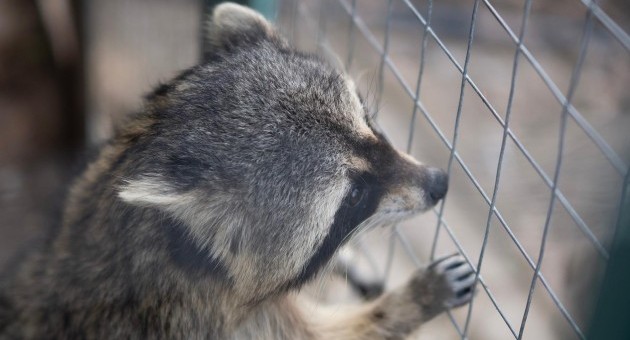Many articles in the popular press have attempted to justify animal research. Still more articles have been written in opposition to animal research, but few are by experienced technicians describing how animals are really used in research. I was involved in animal research from 1976 -1992 in two major research facilities and four separate laboratories and under the direction of many investigators. I feel qualified to fill that gap.
Let me state at the outset that I consider myself to be a true animal lover.
In my 16 years as a research technician I have not personally been involved with, or known of, any project which I would consider truly inhumane at the research facilities in which I worked. I have known of only two instances of animal handling which I would consider inappropriate. One occurred at an institution where I worked and was initiated by an untrained although very experienced technician. The other instance occurred at a major university in the US.
Similar circumstances, in my opinion, would not occur today due to the increased regulations on animal research. I have found that extraordinary measures are taken by most principal investigators and research facilities prior to the beginning of a project to ensure that a minimal amount of pain and suffering will be endured by the animal subjects. In addition to the legal issues and bad press researchers must deal with, their primary concern is that they engage in "good science."
It is clearly "bad science" to stress your subjects to the point of skewing physiologic results, so it is to the researchers' advantage to properly care for the animal subjects. Most researchers are aware of this advantage, but it is true that there are bad researchers, interested only in the financial or egotistical gains to be had. But let's be realistic; most researchers are not getting rich or famous off their work, and they often invest excruciatingly long hours to obtain answers for the good of mankind.
Research facilities must adhere to a variety of regulations and most do so with great awareness of the consequences if they fail to. Many facilities (I believe most major facilities) have additional requirements imposed by in-house peer review groups. These requirements are often stricter in regards to animal care than government regulations.
There are a variety of ways in which animals are used in research. The largest proportion are used to develop and test procedures or products prior to approval for human use. All of the labs I worked in did biomedical research and studied either the ill effects of specific diseases and conditions or did surgical research to investigate new techniques for the improvement or lengthening of human life.
Development of a research protocol
Development of a research protocol is done usually by the principal investigator in response to a variety of factors such as:
- Area of expertise or interests
- Facility requirements or contractual requirements
- Societal needs or constraints
- Funding availability
- Government mandates
Frequently investigators with varying fields of expertise collaborate in the development of a protocol and carry out various portions of it in diverse locations.
At the early stages of development the research scientist and his staff will generally spend a considerable amount of time doing library research to evaluate the merit of his ideas. This is a time when they ask various questions such as (but certainly not limited to):
- Has this been done before? If so, was it done using valid scientific design and are the results consistent with other related research?
- Can I improve upon or answer additional questions beyond what was already done?
- What techniques are already developed that can be used to test our hypothesis?
- How are these techniques different or the same as those our lab has experience with?
There is nearly always some point in the early design at which an investigator asks himself questions about the greater impact of the work on society and what it will mean to future generations. This thought process is often hidden by mundane daily concerns, but I have never known anyone who is keen on scientific research who did not have an underlying desire to make a difference to the future of our society.
It is probably only fair to point out however that most investigators simply flow from one project to another because the next project is so often an offshoot of previous ones. The succession of research protocols in any investigator's life is frequently a lifetime commitment to answering a limited number of fundamental questions.
It is the repetitive nature of scientific research, the need to verify and then verify again that often confuses, irritates and angers many not involved in the quest. But it must be understood that it would be folly to apply research which had not been carefully repeated and verified by others.
Following the library research, the investigator will discuss his ideas, thoughts, and questions about the project with others. This varies greatly from one institution to another. In my experience, much more discussion is done in academic facilities - though it seems that many private and government facilities have a built in mechanism for insuring that ideas are well thought out. In these facilities there are often groups of individuals who help determine the direction the research will take for that institution.
Once the ideas are fleshed out and techniques to be used are determined, the investigator will begin the process of putting on paper the scientific protocol to be used - usually a grant proposal, a detailed and tedious document which conveys practically every aspect of the work to be done. The writing of a grant insures that the investigator has thoroughly thought through every aspect of the project he wants to undertake. This means everything from the number of animals to be used (this is properly determined using a statistical procedure which determines the number of results required for a given level of statistical accuracy) to the staff's credentials.
The proposal goes to a body of individuals who ultimately decide its merit, value, and application to society. Competition for funding through grants is heavy; only the best will be approved.
The research and reporting
Once the grant is approved, the investigator meets with his staff and sets in motion the preliminary experimentation. Again, this varies depending on the nature of the project. If the investigator's staff is well versed in the specific techniques required, experimentation can begin immediately. Often, however, some trial runs are made with new or modified techniques, perhaps to familiarize a technician with a particular type of chemical assay using a new assay kit or perfecting a surgical procedure which has not yet been attempted by this team on a particular species of animal. Techniques and procedures must be perfected before the data obtained from the research is deemed reliable. The surgical team must become comfortable with the procedure and with the flow of work among team members.
In addition, these procedures usually involve a large variety of electronic instrumentation (sometimes even instrumentation that is new and being tested for the first time) for monitoring physiologic responses. The instruments must function reliably every time; calibration and set up must become second nature to at least two of the team members. Usually there are individuals who have experience with the equipment, but in some cases new members must be trained or variations in the usual set-up will be needed.
Once the actual experimentation and data collection begins, procedures are constantly reviewed. While it is not a frequent occurrence, (because hopefully all the bugs have been worked out previously), it is acceptable and desirable that any flaws in design be corrected during the experimental run. This may incur on occasion the use of an additional animal or two; however the grant proposal usually takes this possibility into account.
The care of the animals is continuously reviewed by in-house veterinarians and all procedures involving animals are reviewed and supervised by board certified veterinarians. In addition, technicians involved in the projects are generally responsible for post-surgical care, which is generally more demanding than the care of non-operated animals. In procedures where recovery from anesthesia is not part of the protocol, there are very specific euthanasia requirements set forth by the various animal care boards, and often in-house requirements are even more stringent for the euthanasia technique to be used. In some cases, even the administration of euthanasia is regulated.
Finally, when all the data is collected, the investigator and his staff complete the statistical analyses and review that has been going on throughout the experiment. This report is presented to groups of peers and others who will build on and make use of the information provided to continue the challenging tasks of cleaning up our streams and lakes, saving our children from the perils of leukemia, keeping our parents alive through heart or lung transplantation, and providing us with a host of products that make our lives better.
 |
Like this article? Don’t forget to share, like or follow us |
 |
NAIA WEEKLY ROUNDUP
FEATURED & LATEST ARTICLES
GET THE NAIA WEEKLY ROUNDUP VIA EMAIL FOR FREE
Stay Connected with The NAIA: Sign Up for The Weekly Roundup
Join our FREE newsletter and community of animal advocates and receive The NAIA Weekly Roundup straight to your inbox. Stay in the loop with the latest news, events, and ways you can make a difference in the lives of animals. Sign up now to stay informed to create positive change!
Sign Up




 NYCLASS Lawsuit, Penguin Retirement Homes, Beagle Noses, and More!
NYCLASS Lawsuit, Penguin Retirement Homes, Beagle Noses, and More!
 Animal Liberationist Convicted, Human-Elephant Conservation and Conflict, and More!
Animal Liberationist Convicted, Human-Elephant Conservation and Conflict, and More!
 Conference Roundup, Smuggling Bust, Elephants and an Animal Rights Lawsuit, and More!
Conference Roundup, Smuggling Bust, Elephants and an Animal Rights Lawsuit, and More!
 A Question of Neglect, A Legendary Primatologist Passes Away, and More!
A Question of Neglect, A Legendary Primatologist Passes Away, and More!



